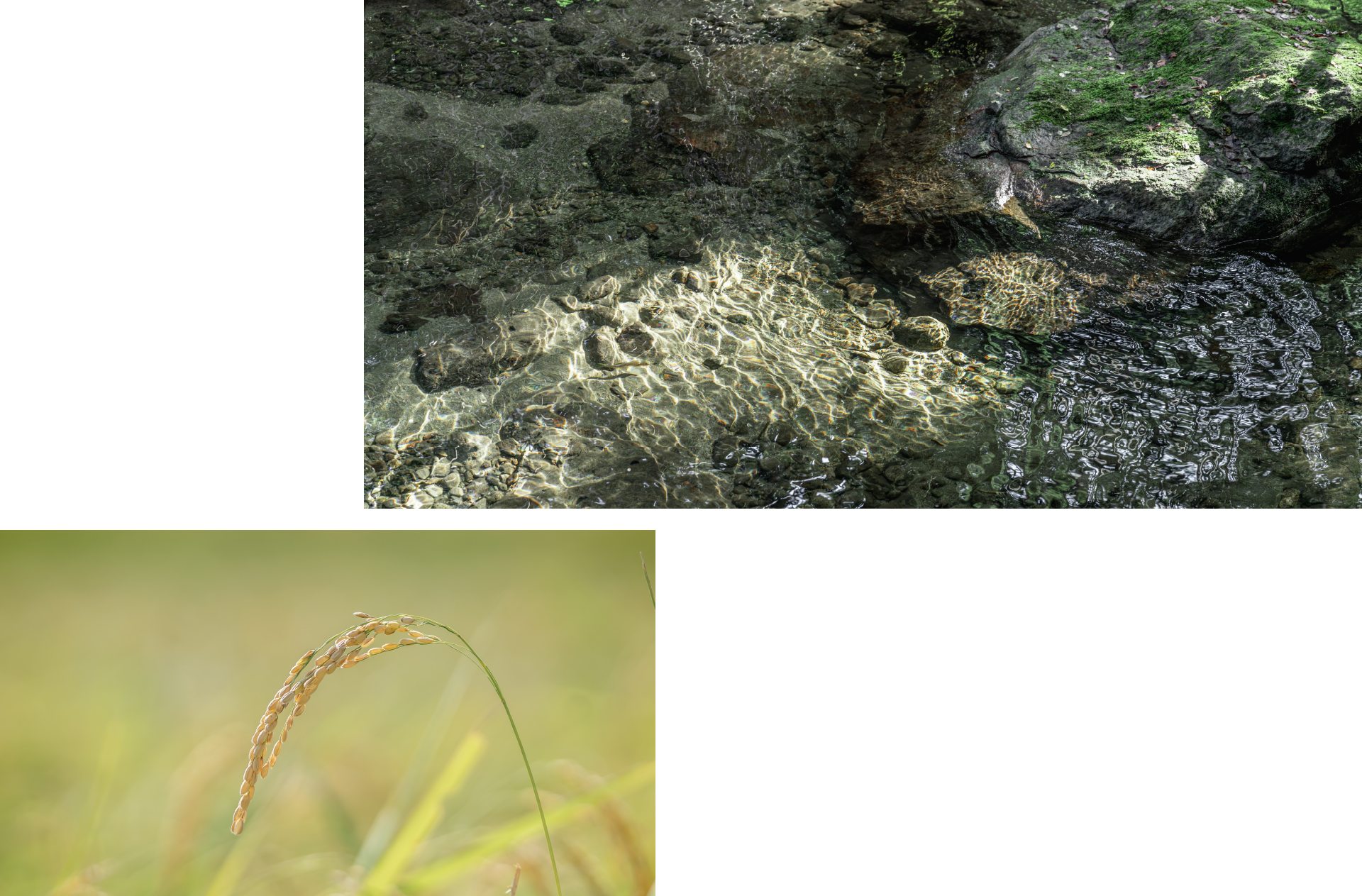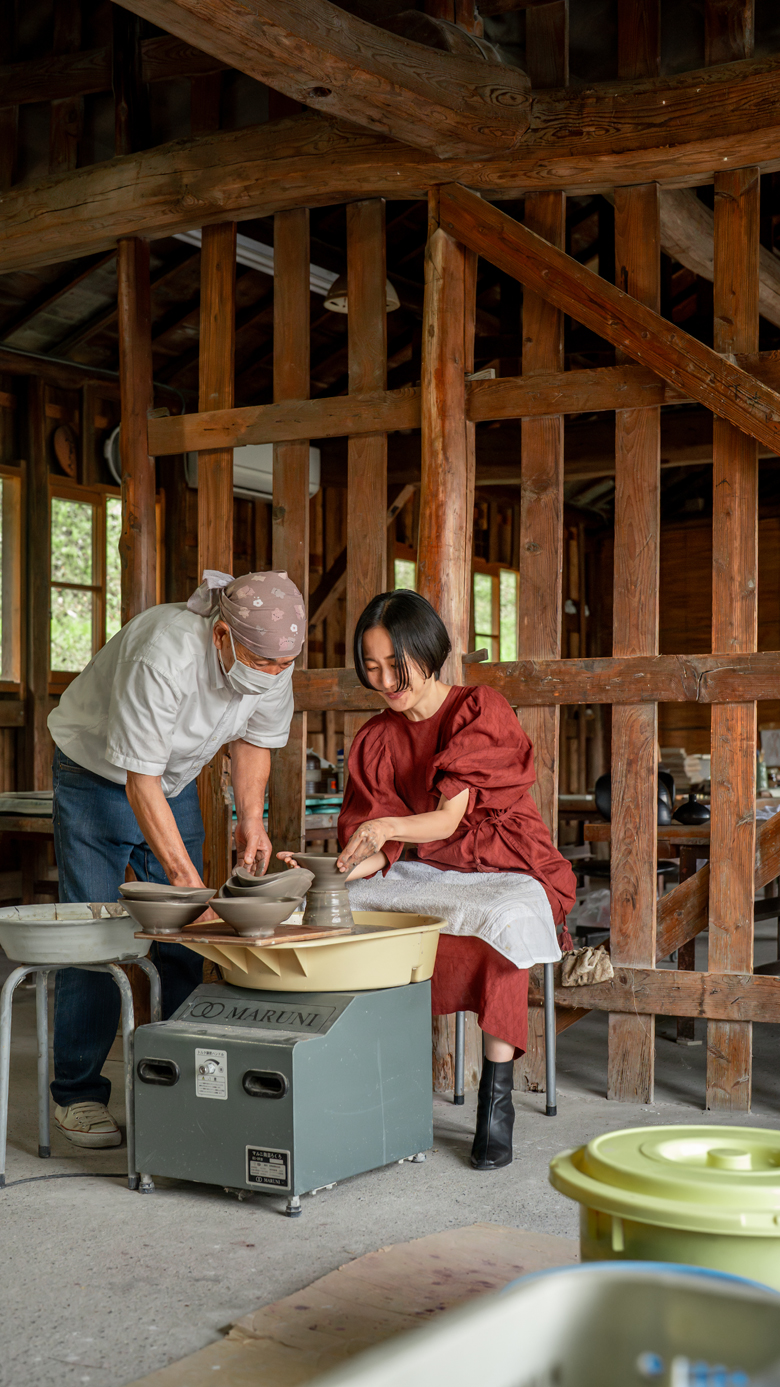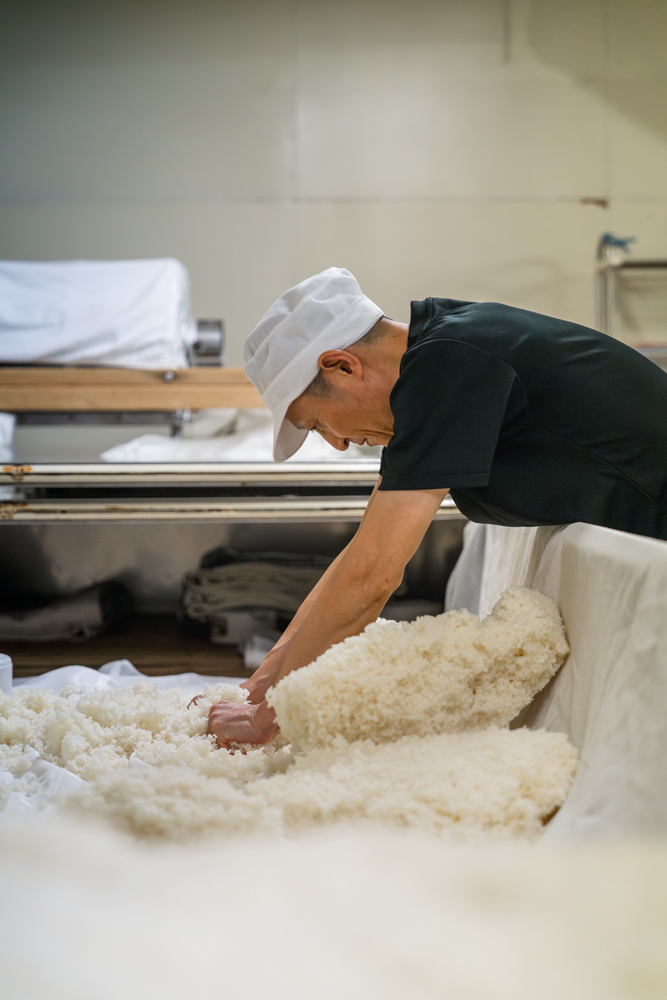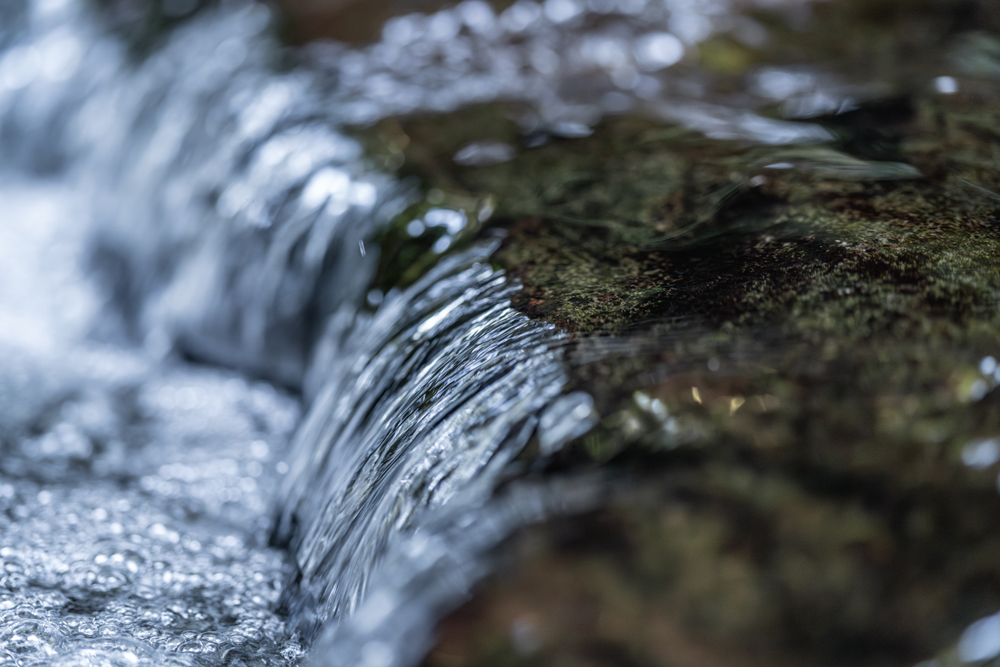2. Founded in the Edo Period
Historic brewery “Wakaebisu Sake Brewery”
From here, we will delve deeper into the appeal of Iga's sake, ``Iga Sake,'' and the thoughts of its makers through ``Wakaebisu Sake Brewery,'' which was founded in 1853.
Wakaebisu Sake Brewery is one of the oldest sake breweries in Iga, which has a long history as a sake brewery. Wakaebisu Sake Brewery was founded by Mr. Gizaemon Shigefuji, who ran an inn in Aoyama ao, Iga, which flourished as a post town on the Hatsuse Highway connecting Kyoto/Yamato and Ise.
We spoke with Kuniko Shigefuji, the 8th generation brewer and current representative of Wakaebisu Sake Brewery, which has been producing high-quality sake for a long time since its founding.

Wakaebi Sake Brewery's long-selling brand "Gizaemon" series. Some also use ``Mie Yamada Nishiki'' grown in Iga as sake rice.
Feel it in Iga
A taste that hits you in the chest
“Even if you just call it Iga sake, the taste is rich in individuality depending on the raw materials, sake rice and yeast, and the production methods of each sake brewery.Therefore, it is fun to drink and compare Iga sake.In addition, each sake has its own unique taste. Although they have their own unique characteristics, I think that many of the sakes have an overall umami and gentle flavor, perhaps due to the delicious water from Iga,'' says Kuniko Shigefuji.
It is also said that the taste of Iga sake can be deepened by visiting Iga.
``When you visit Iga, I want you to try the ``ingredients unique to Iga,'' such as vegetables grown in the area's rich water and soil, and Iga beef, along with Iga sake. In fact, it feels like I'm falling down,'' says Kuniko Shigefuji.
You can actually immerse yourself in Iga's rich natural scenery, taste the ingredients and sake that have been blessed with the land, and experience with your whole body what is unique to Iga.
Iga sake will play a role in such a trip to Iga that you can “feel with all five senses.”
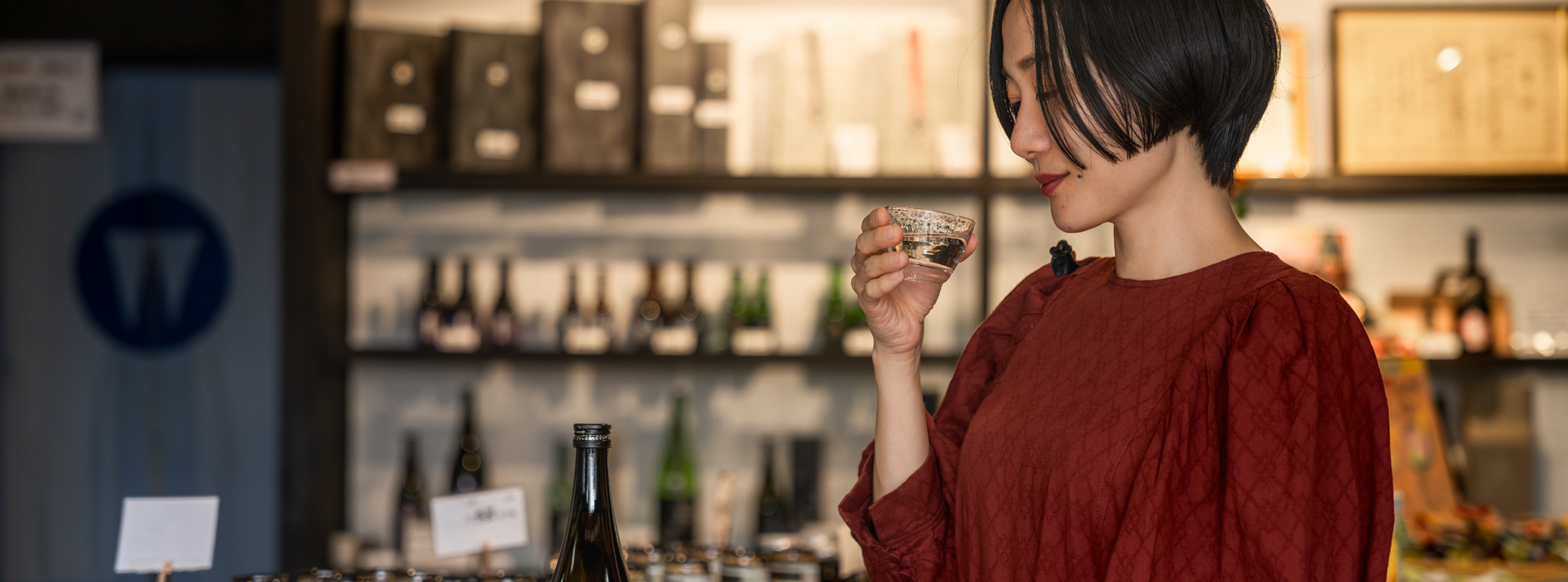
Further exploration of taste
Mr. Hisakazu Shigefuji, the fifth generation of Wakaebi Sake Brewery, worked with local farmers to revive the cultivation of Yamada Nishiki, known as the king of sake rice, in Mie Prefecture, and succeeded in cultivating Yamada Nishiki in the prefecture for the first time in 20 years. I let it happen. Wakaebisu Sake Brewery's passion for craftsmanship, which strives to cultivate sake rice in order to produce high-quality sake, has been passed down from generation to generation.
Wakaebisu Sake Brewery's commitment to craftsmanship is also reflected in the rice polishing ratio.
Sake is made by polishing sake rice, and sake with a high polishing ratio can enjoy a scent close to the original rice and a taste without any unpleasant tastes. However, on the other hand, increasing the rice polishing ratio requires advanced technology and costs.
The average rice polishing ratio for sake nationwide is 64.0% (2016), and Wakaebisu Sake Brewery's average rice polishing ratio is 58%, which is higher than the national average. Furthermore, while the rice polishing ratio for Daiginjo and Junmai Ginjo is stipulated to be less than 50%, Wakaebisu Sake Brewery's rice for Daiginjo is extremely polished at 35%, which shows that it takes a lot of effort and cost.
Even though it takes time and money, Wakaebisu Sake Brewery carefully mills all of its rice in-house to match the timing of sake brewing in order to pursue even better taste.
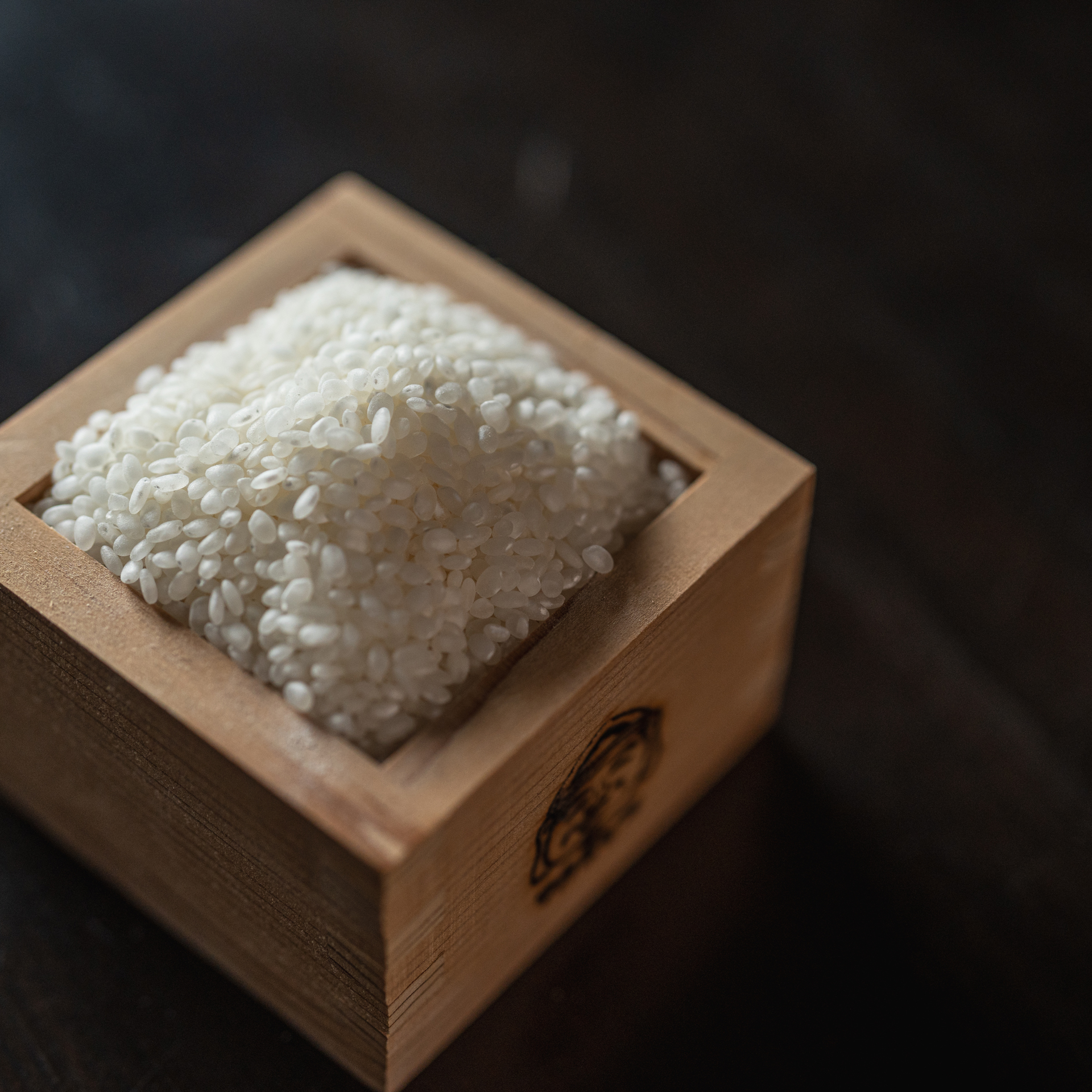
Sake rice is carefully polished for each type of sake while monitoring its condition in accordance with the timing of sake brewing.
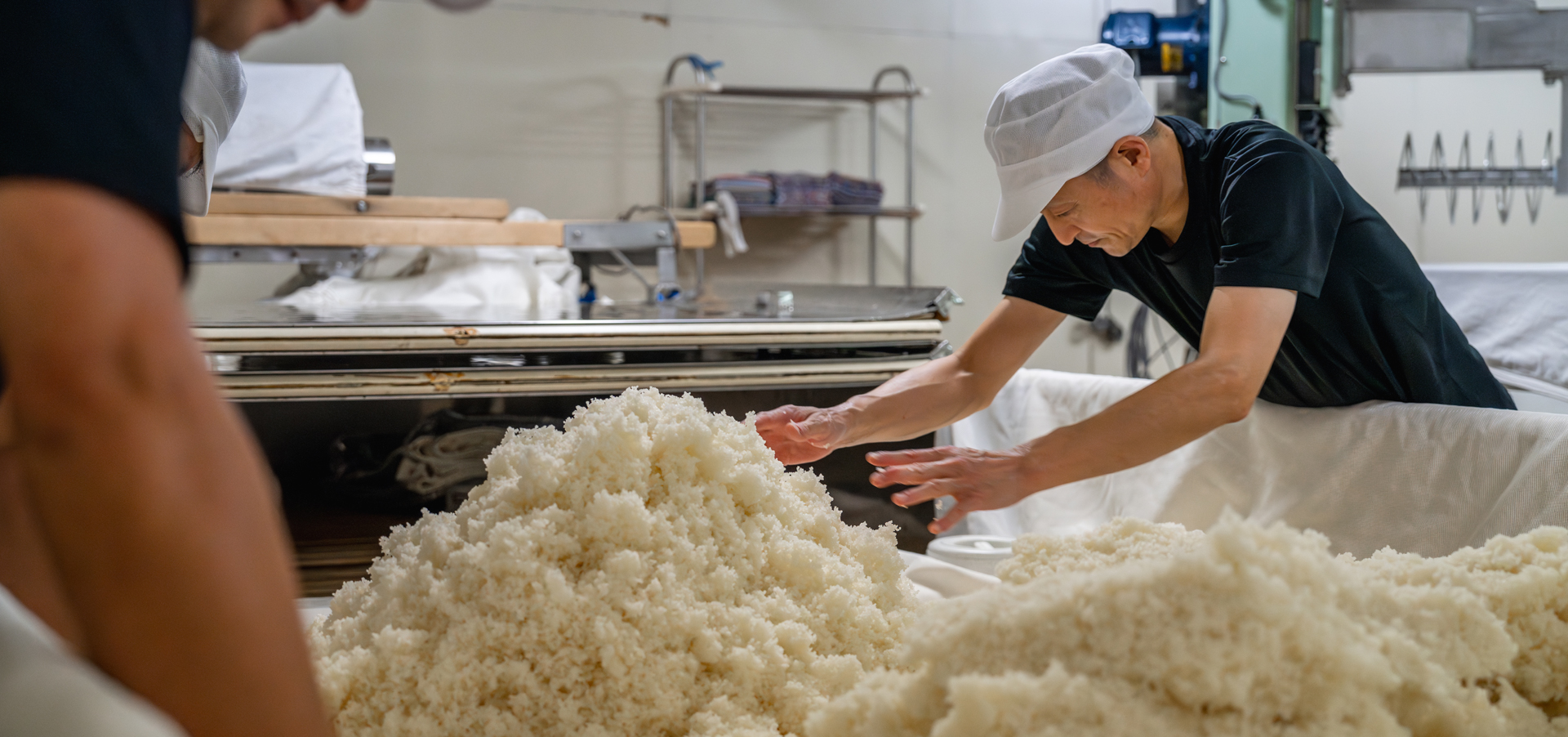
A scene from the "cutting back" process. As the process progresses, the condition of the rice is carefully checked by touch and by the machine.
``Wakaebisu Sake Brewery has carefully incorporated local ingredients from Iga and Mie into its sake brewing,'' says Kuniko Shigefuji.
Currently, the sake rice used at Wakaebisu Sake Brewery is mainly locally produced, including Yamada Nishiki from Iga and Mie Prefecture's original sake rice, ``Kamiho''.
In addition to the wide variety of in-house yeasts used by previous generations, we also use five original yeasts developed uniquely by Mie Prefecture. The techniques used are elaborate, such as blending multiple types of yeast at different times to bring out their respective aromas and flavors.
``Right now, in Mie Prefecture, there is a lot of information being exchanged across breweries, such as giving advice on the handling of yeast and sake brewing.As ``Mie Prefecture's sake,'' we are all working together to learn how to make good sake. I think I am aiming to become a sake brewer,” says Kuniko Shigefuji. Just like sportsmanship, where everyone takes care of each other and competes fairly, great craftsmanship seems to have taken root among breweries in Mie Prefecture.

Because it is loved by the locals
We want to spread the appeal of our products widely.
``Sake produced here in the Aoyama area IgaCity was originally consumed mostly locally.Currently, it is widely distributed throughout Japan and overseas, but it is still enjoyed by local people.'' and Kuniko Shigefuji.
When you hear the phrase “local sake that continues to be loved by the locals,” you can understand its charm even more.
In addition to disseminating information on SNS and YouTube and participating in events across the country, Wakaebi Sake Brewery has teamed up with female brewers from Moriki Sake Brewery and Ota Sake Brewery, which also operate sake breweries in Iga, to promote Horoyoi Sake Brewery. We strive to spread the appeal of Iga sake by holding events such as ``Iga sake de girls' night out'' where you can have fun tasting it.
"Perhaps it's just the nature of ninja towns, or maybe there's a culture of wanting to hide good things. It takes a lot of power to disseminate something that was originally consumed locally, but we're doing it as much as we can. I am struggling to do this.”
I could feel the overflowing love for Iga sake that is unique to the brewers as they presented the Iga sake that they had painstakingly made with passion and confidence.
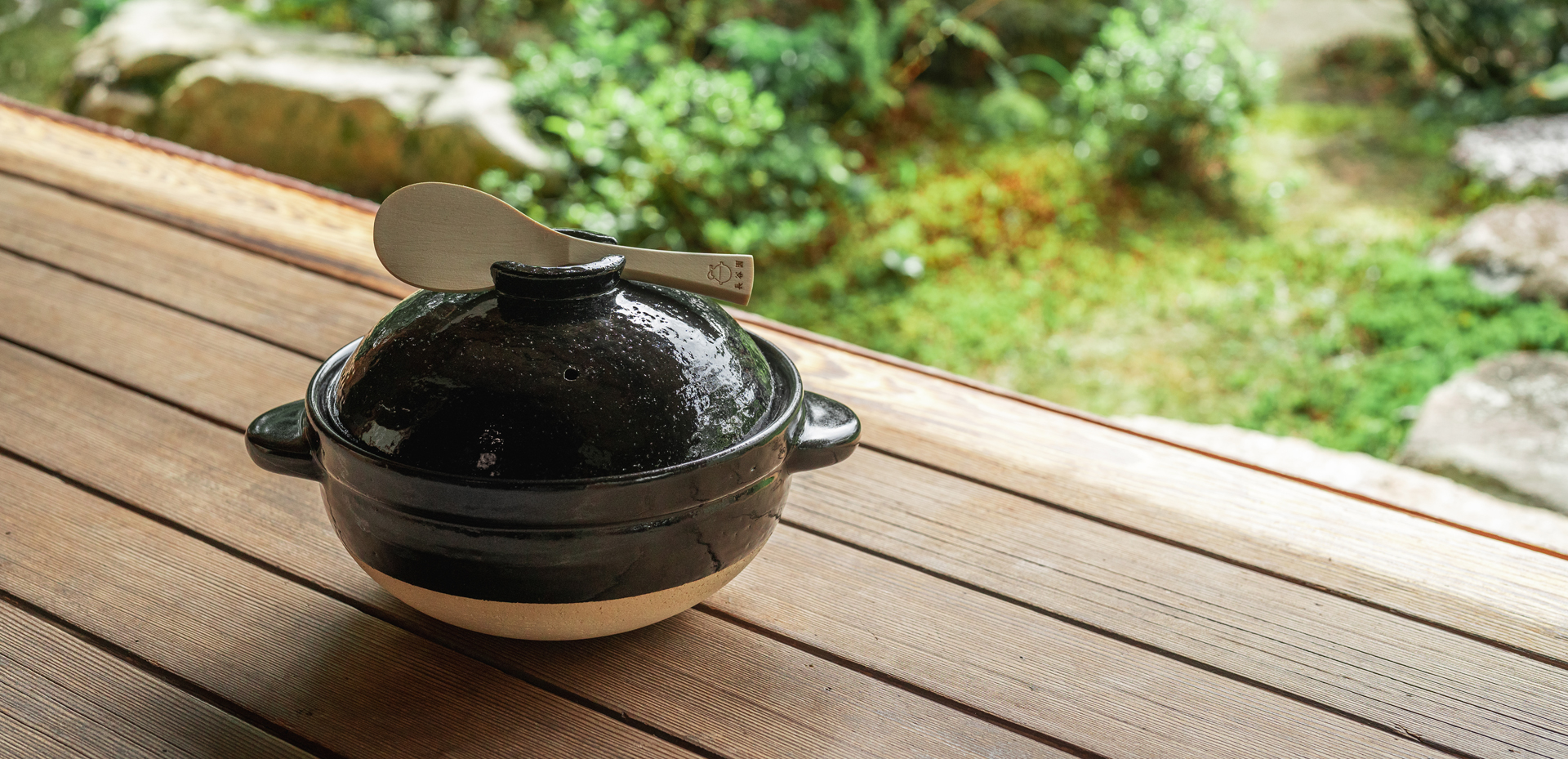
Earthenware pots and stoves from Hasenen, a historic Iga-Yaki pottery. You can enjoy delicious food using far infrared rays, and the design is attractive and makes you want to share it around the dining table. Iga-Yaki enriches people's lives.
3.Iga Iga-Yaki with a history of 1200 years
Iga-Yaki began 1,200 years ago. It is said to have originated during the Tenpyo era (729-749), when farmers burned agricultural seed pots and household utensils. During the Muromachi period, when the tea ceremony was refined, water lilies and flowers were baked in Iga, and in the Momoyama period, when wabi tea was perfected, tea masters such as Sen no Rikyu liked the taste of Iga-Yaki, and it was presented to feudal lords. It was prized and used as a gift.
In 1669, Iga-Yaki declined for a time due to the ``Oruyama system'' that prevented over-excavation of Iga clay, but later when pottery production was encouraged by the feudal lords and it was revived, Iga-Yaki lost its former status. Instead of tea ceremony utensils, the making of earthenware pots, Yukihira, and other utensils for everyday life became mainstream.
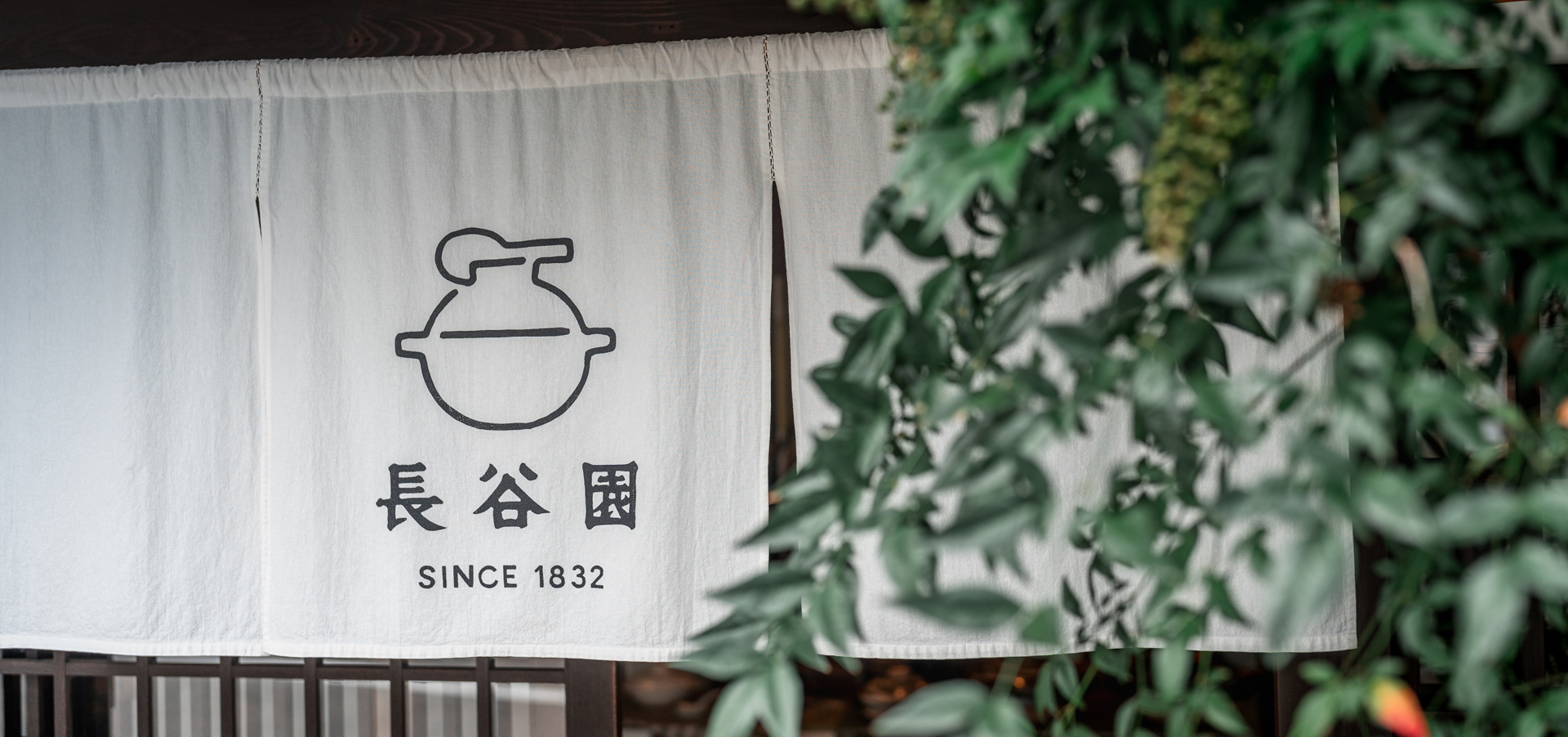
Since its opening in the Edo period, Hasenen has continued to produce pottery useful for the daily lives of common people, including a variety of tableware and miscellaneous wares, as well as earthenware pots and Yukihira.
Traditions and techniques passed down from generation to generation
"Iga-Yaki pottery manufacturer "Hasegawa""
Nagatanien is an Iga-Yaki pottery founded in Marubashira IgaCity in 1832.
Nagaseen opened its kiln at a time when Iga-Yaki was being transformed from a tea ceremony utensil to an everyday tool for the common people.
Additionally, since the opening of the kiln coincided with the popularity of ``Konabetate,'' a method of eating in small pots that started in the towns of Edo, from the beginning Nagaen's clay pots were made using high-quality Iga clay. It is said that they made excellent everyday tools.
While inheriting the history since the opening of the kiln, Haseen has kept an eye on the times and has continued to create products that are useful for modern life.
From here, we will ask Yasuhiro Hase, the 8th generation owner of Haseen, about the appeal of Iga-Yaki and the thoughts of its creators.
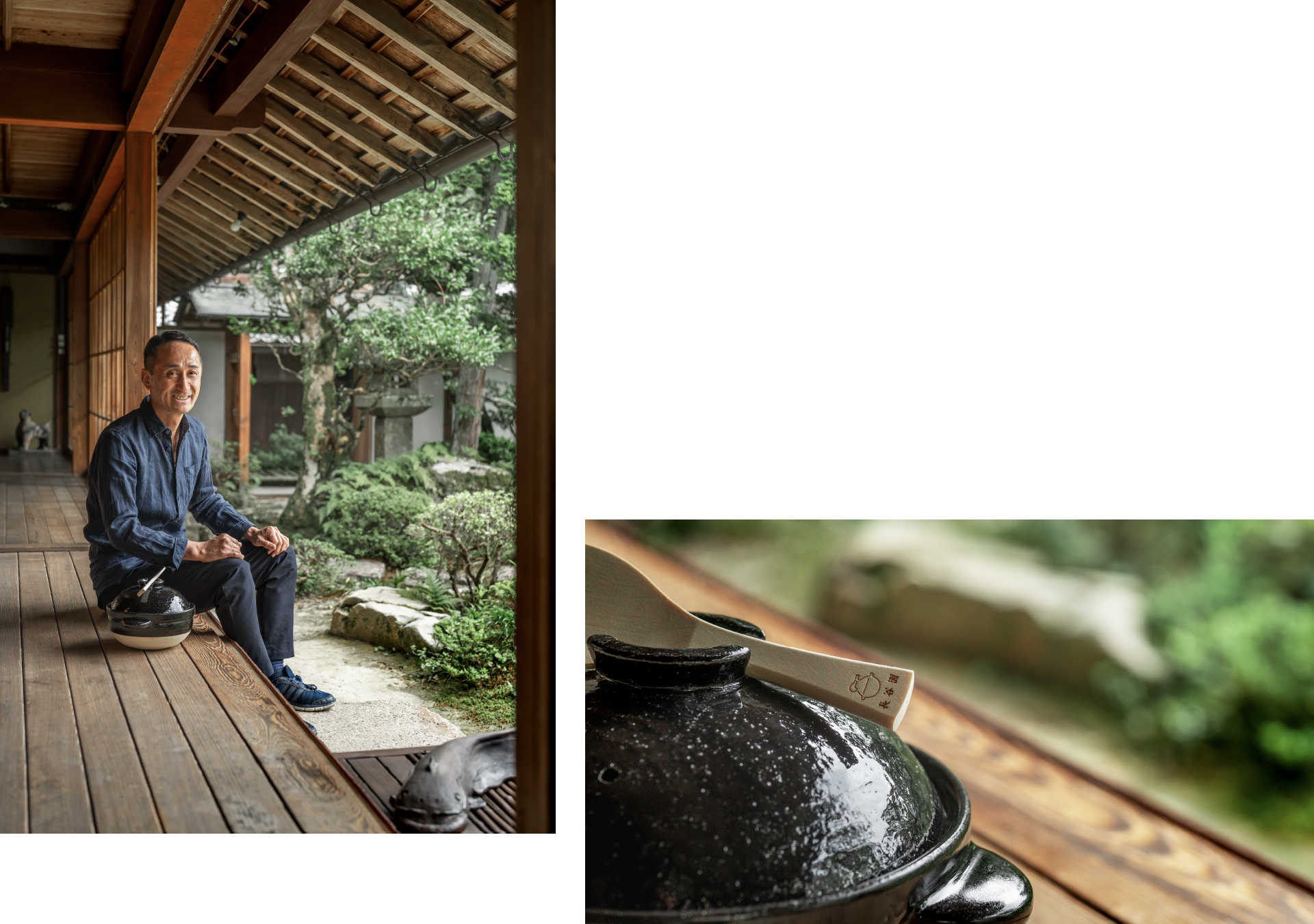
Yasuhiro Hase, the 8th generation owner of Haseen, is dedicated to inheriting the tradition and techniques of Iga-Yaki while creating products that suit lifestyles that change with the times.
Produced by the Old Biwako Layer
High quality Iga soil
``Although Iga-Yaki is a small production area, it has wonderful characteristics comparable to any other production area, such as the old Biwako layer soil, which has excellent fire resistance and heat storage properties,'' says Yasuhiro Hase.
It is said that about 4 million years ago, Lake Biwa was once located in Iga, and what was originally Lake Biwa rose up to become Iga.
Soil produced from the Paleo-Biwako layer, which contains many fossilized creatures and plants, is fired at high temperatures to burn out the fossilized parts and form fine pores. The ``multi-porous'' dough with countless small holes does not rise or cool quickly, and when used in a clay pot, it has the effect of slowly bringing out the flavor and sweetness of the ingredients.
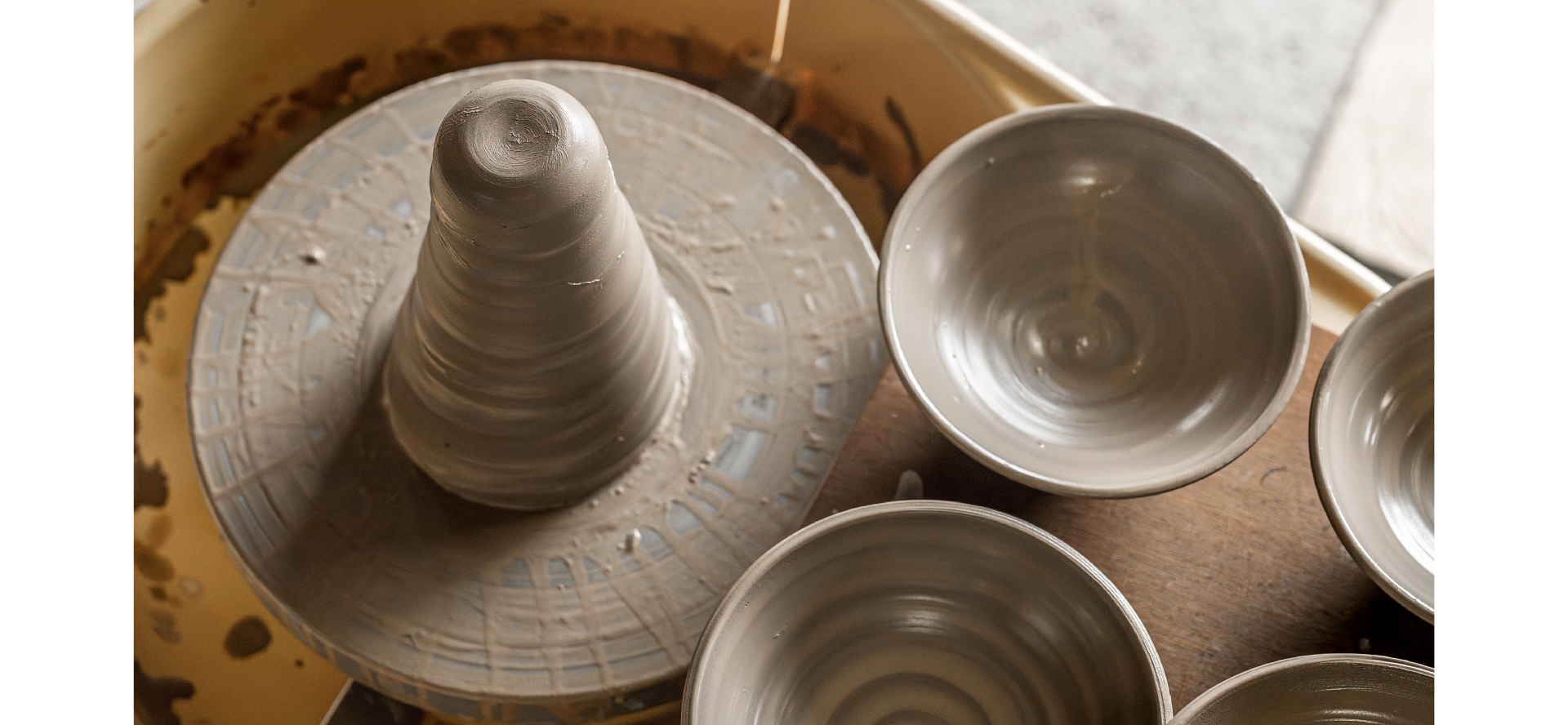
Iga clay also has excellent heat storage properties.
``When you use it, you realize that it feels like the soil is doing its own thing.'' You put all the ingredients and seasonings in the clay pot, and once it comes to a boil, turn off the heat, and all you have to do is use the residual heat to create a delicious dish.'' Yasuhiro Hase speaks.
Another appeal is that the far infrared rays of the pottery transfer heat from the core of the food, allowing you to enjoy the fluffy, soft texture of charcoal-grilled food in a relatively short amount of time.
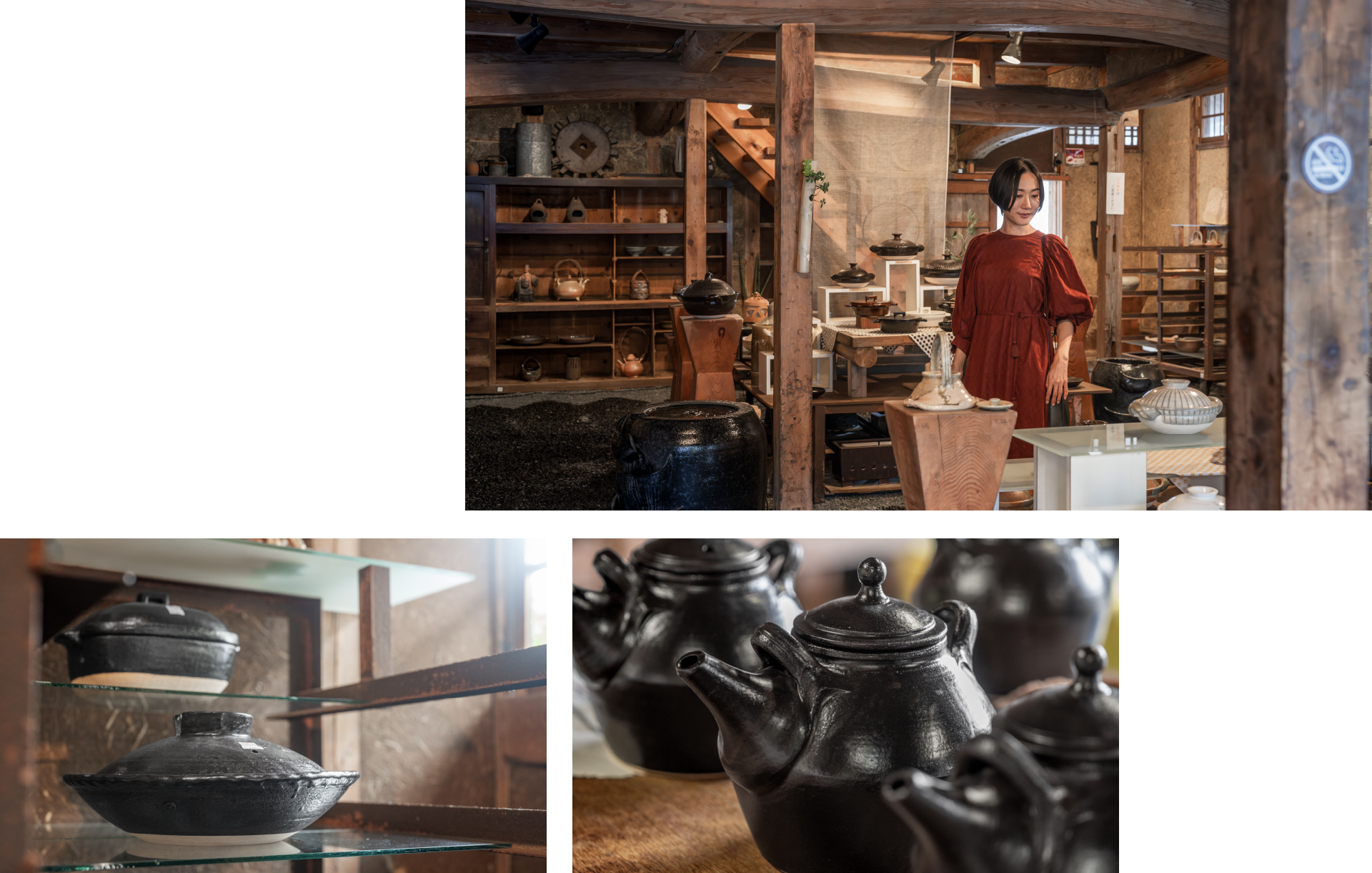
Earthenware pots are made using not only machines but also manual labor in order to create precise clay pots that respond to the varying hardness of the soil depending on the season and weather.
Iga-Yaki that colors your life
Yasuhiro Hase says, ``As people's lifestyles have changed, we have continued to create products that suit them.''
“At the root of this is the idea of a foodie, who thinks that Iga has a lot of delicious ingredients and wonders how to cook and eat them deliciously.”
Iga-Yaki produced by Haseen has the appeal of not only being used as utensils for cooking, but also serving as ``ware that adds color to the table.''
“Iga-Yaki has a history of being used as a tool for daily life and as a tool for the tea ceremony.I feel that the spirit of hospitality, which is the spirit of the tea ceremony, has been inherited.”
The spirituality that has been passed down from ancient times continues to be passed down and adds color to our lives today. I was able to feel even more the depth and charm of Iga-Yaki.
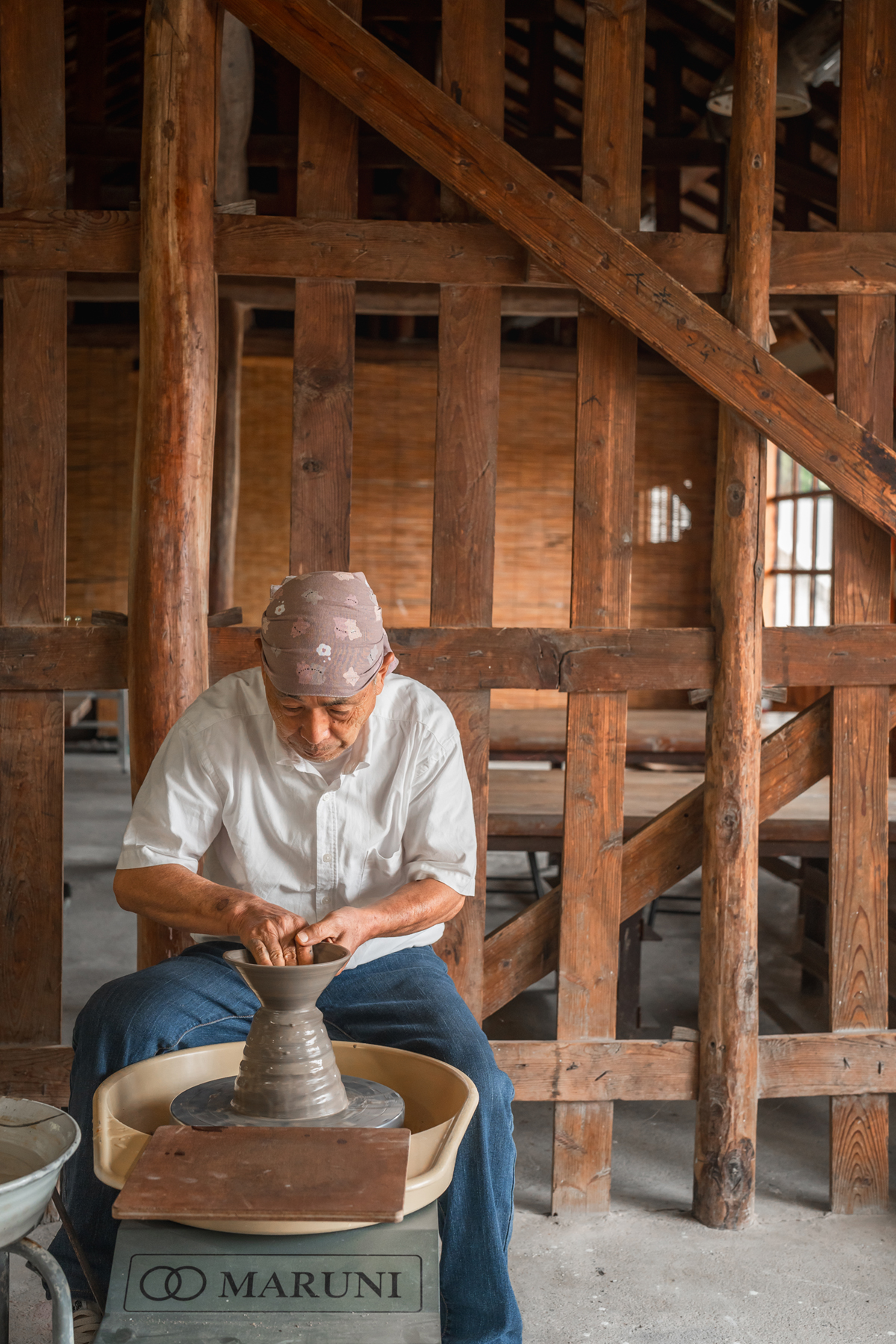
Haseen has a main store with many Iga-Yaki products, a walking area, and a workshop where you can try out some of the products.
Careful ``creator'' and ``user''
exploration as
Nagaten's company motto is ``The maker must be the true user.''
``I think the starting point is not to create a work based on the creator's ego, but to become the user and see if it makes the user happy,'' says Yasuhiro Hase.
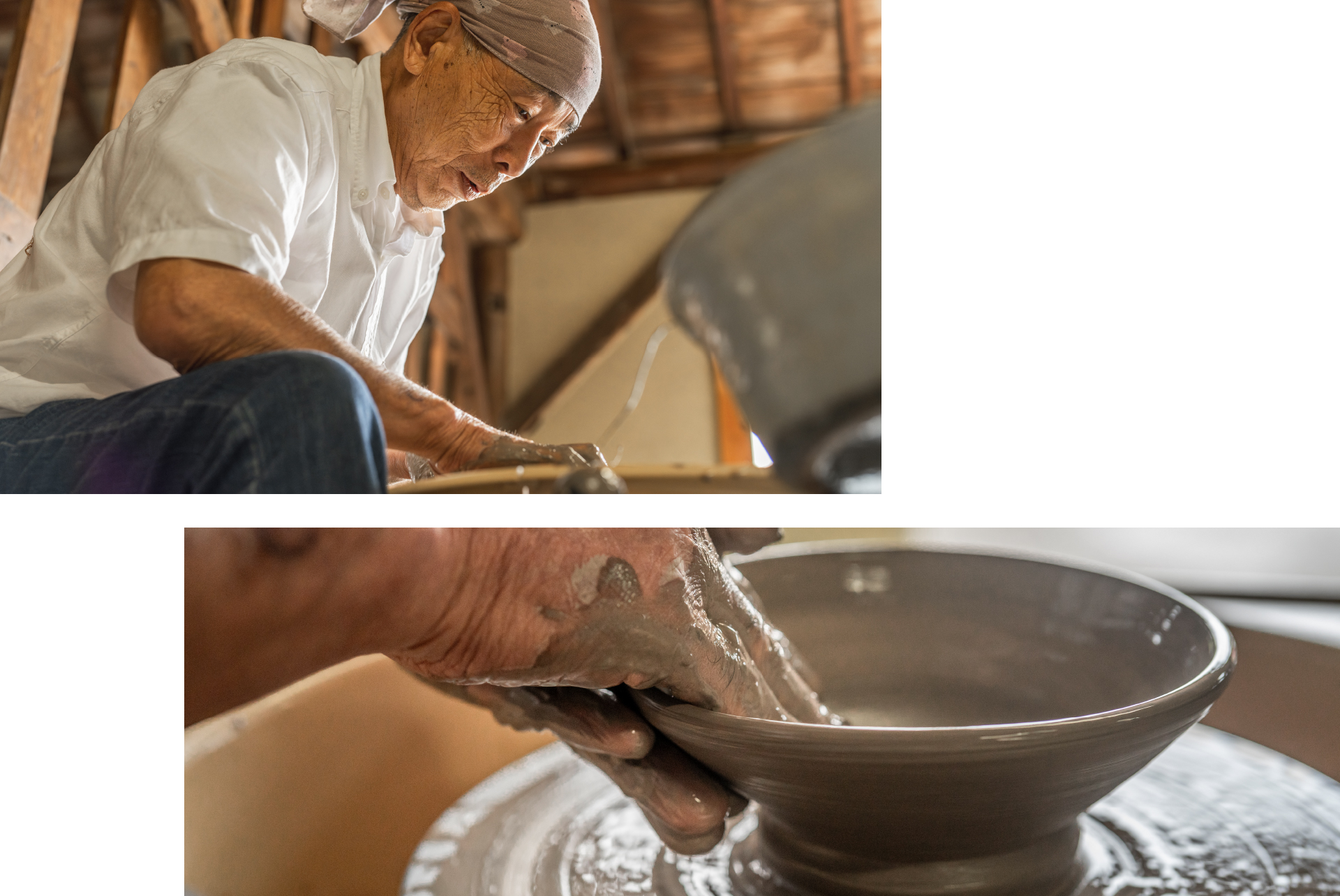
Mr. Masashi Kawakami, who has a long career as a potter and has been working at Haseen for about 35 years, is silently creating pottery in the workshop inside Haseen. It seems that Mr. Kawakami has created numerous prototypes of Hasenen, which are now being commercialized.
After making many prototypes over and over again, Iga-Yaki is finally in the hands of people.
Yasuhiro Hase: ``As a maker of Iga-Yaki, it is my pleasure to hear from our customers that it was delicious to use, and that they enjoyed sitting around it at the table.''
The gaze of Mr. Kawakami, who was making the pottery, seemed to be shining brightly, as if he was seeing the joy on the user's face.
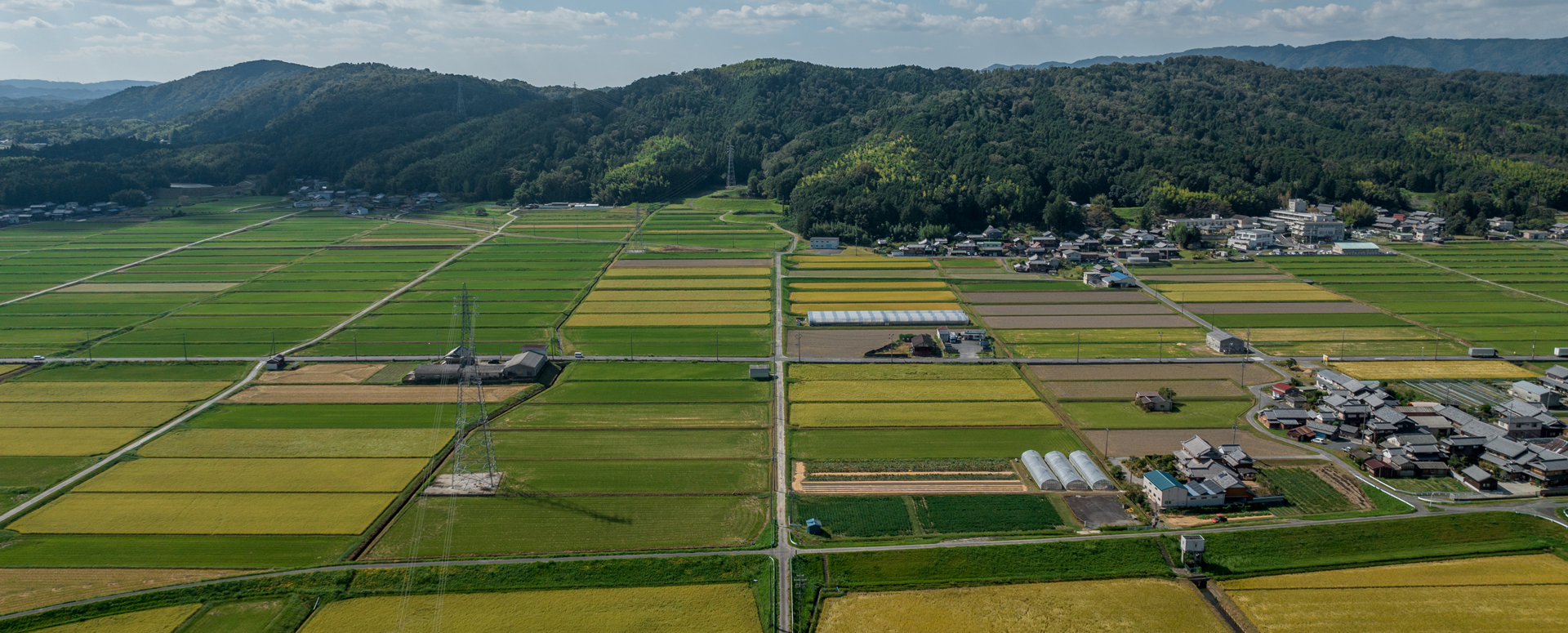
Along with beautiful original scenery
``Many Iga-Yaki ware potteries and pottery artists are gathered here in Marubashira IgaCity, so you can enjoy a pottery tour.In addition, we want you to enjoy this beautiful location as part of your trip,'' says Yasuhiro Hase. Mr. Miss.
"While looking at the calming scenery, enjoy the delicious food grown by Iga's water, soil, and temperature differences. Iga-Yaki will add color to your experience. Please enjoy this rich experience."
Iga has an original landscape that will make you feel relieved and endeared.
Finally, Yasuhiro Hase said with a smile, ``Iga has a lot of charm in terms of food and culture.We want to continue to convey the charm of Iga through manufacturing.''

